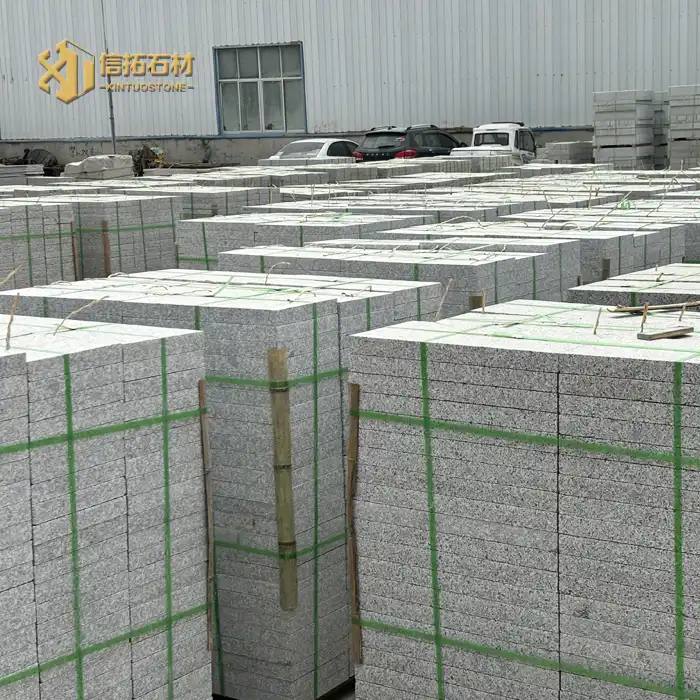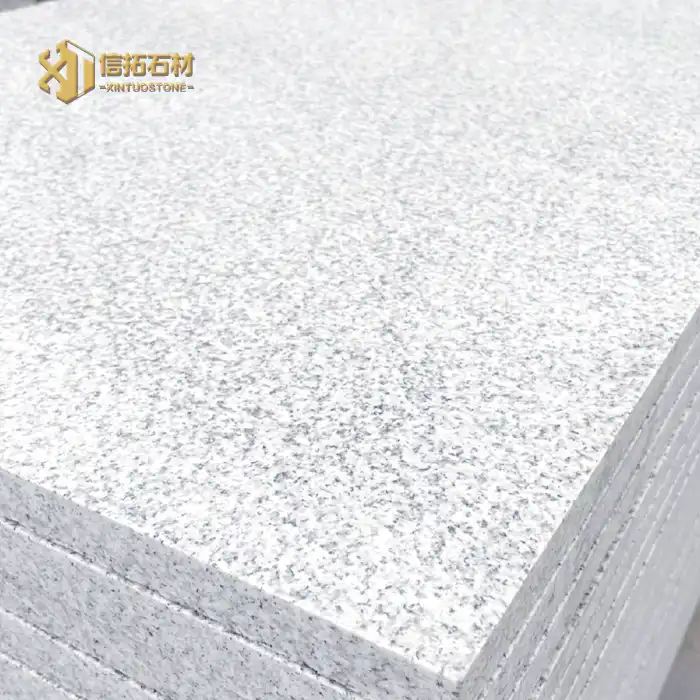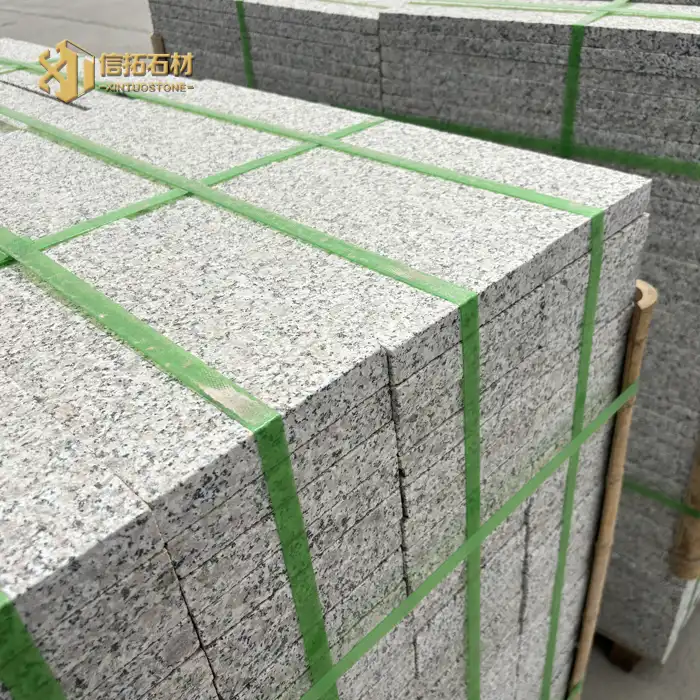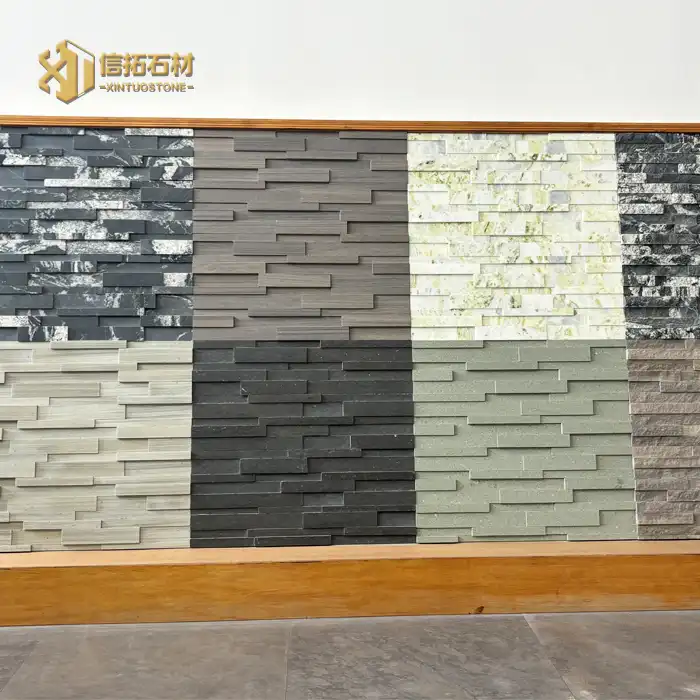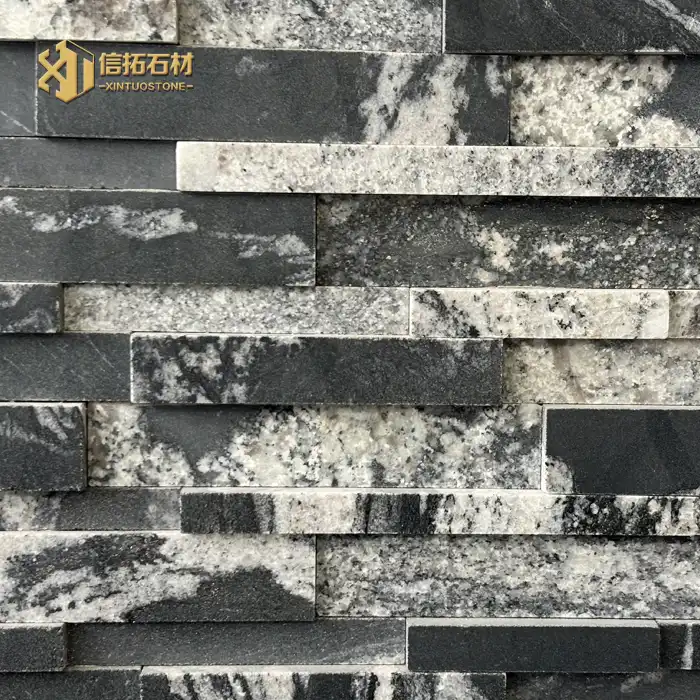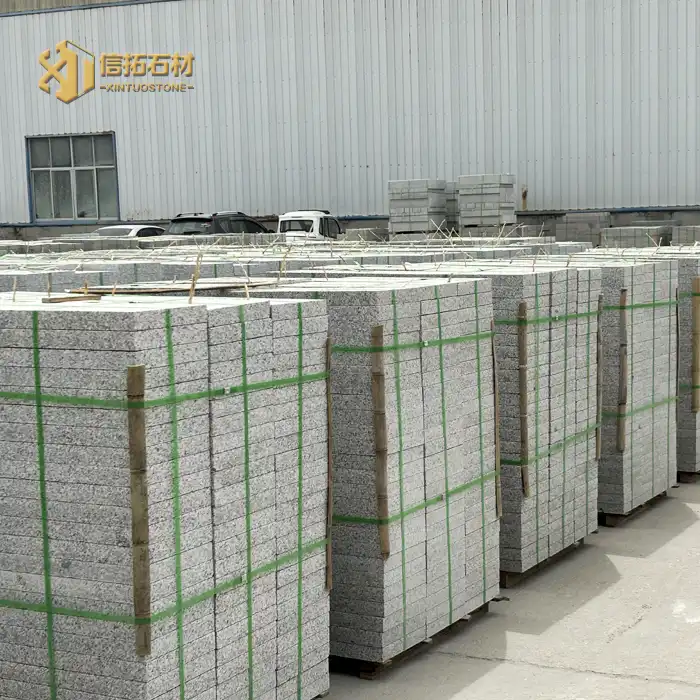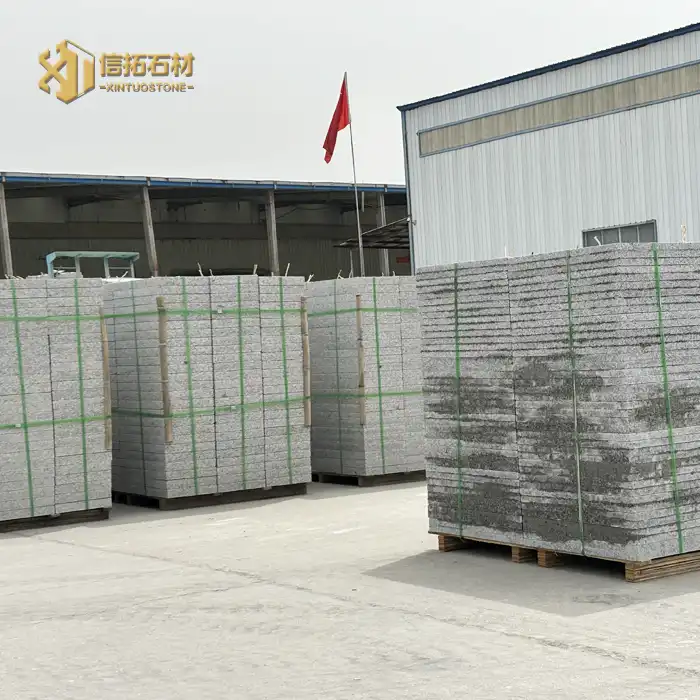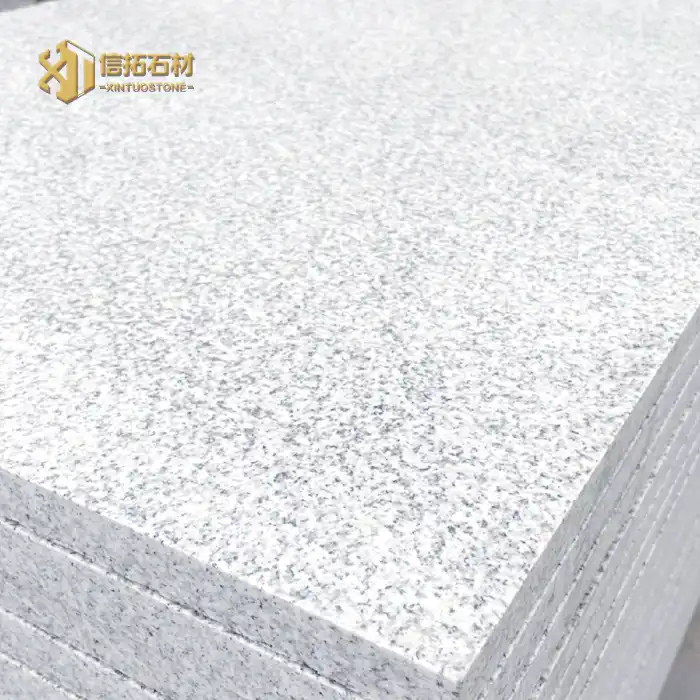How to Seal Silver Grey Granite Slabs?
2025-07-22 09:36:50

Silver Grey Granite Slabs are a popular choice for both interior and exterior applications due to their elegant appearance and durability. However, to maintain their beauty and protect them from stains and damage, it's crucial to properly seal these slabs. Sealing silver grey granite slabs is a process that involves applying a protective coating to the stone's surface, which helps to prevent liquids and other substances from penetrating and potentially causing discoloration or etching. This process not only enhances the granite's natural beauty but also extends its lifespan, making it a worthwhile investment for homeowners and businesses alike. In this comprehensive guide, we'll explore the steps involved in sealing silver grey granite slabs, the benefits of doing so, and some expert tips to ensure you achieve the best possible results for your stunning stone surfaces.
What are the best sealants for silver grey granite slabs?
Water-based sealants
Water-based sealants are an excellent choice for sealing silver grey granite slabs. These sealants are environmentally friendly, low in VOCs (volatile organic compounds), and easy to apply. They penetrate the surface of the granite, creating a protective barrier that repels water, oil, and other potential staining agents. When using water-based sealants on silver grey granite slabs, it's important to apply them in thin, even coats to ensure proper absorption and protection. These sealants typically dry quickly and don't alter the natural color or appearance of the stone, making them ideal for preserving the elegant look of silver grey granite. Additionally, water-based sealants are generally more affordable and easier to maintain compared to other types of sealants, making them a popular choice among homeowners and professionals alike.
Solvent-based sealants
Solvent-based sealants are another option for sealing silver grey granite slabs, offering excellent protection against stains and moisture. These sealants contain strong chemicals that penetrate deep into the stone, providing long-lasting protection. When applied to silver grey granite slabs, solvent-based sealants create a durable barrier that resists water, oil, and other potentially damaging substances. One of the advantages of using solvent-based sealants on silver grey granite is their ability to enhance the stone's natural color and veining, giving it a richer, more vibrant appearance. However, it's important to note that these sealants have a stronger odor and higher VOC content compared to water-based options, so proper ventilation is essential during application. Despite their potential drawbacks, solvent-based sealants remain a popular choice for those seeking maximum protection for their silver grey granite slabs.
Impregnating sealers
Impregnating sealers are a highly effective option for sealing silver grey granite slabs, particularly in high-traffic areas or outdoor applications. These sealers work by penetrating deep into the pores of the stone, creating a protective barrier below the surface. When applied to silver grey granite slabs, impregnating sealers don't form a film on top of the stone, allowing it to maintain its natural appearance and texture. This type of sealer is especially beneficial for silver grey granite used in kitchen countertops or bathroom vanities, as it provides excellent protection against water, oil, and other common household stains. Impregnating sealers also allow the stone to breathe, which helps prevent moisture build-up and potential damage. While they may be more expensive than other sealing options, the long-lasting protection and minimal maintenance requirements make impregnating sealers a worthwhile investment for preserving the beauty and integrity of silver grey granite slabs.
How often should silver grey granite slabs be sealed?
Factors affecting sealing frequency
The frequency of sealing silver grey granite slabs depends on several factors, including the porosity of the stone, the type of sealant used, and the level of use and exposure to potential staining agents. Silver grey granite slabs with higher porosity may require more frequent sealing, as they are more susceptible to absorbing liquids and stains. The quality and type of sealant applied also play a crucial role in determining how often the slabs need to be resealed. High-quality impregnating sealers, for example, may provide protection for several years, while lower-quality or water-based sealants might need to be reapplied more frequently. Additionally, the location and use of the silver grey granite slabs impact sealing frequency; areas exposed to high traffic, frequent cleaning, or outdoor elements may require more frequent sealing to maintain their protective barrier and aesthetic appeal.
Signs that resealing is needed
Recognizing the signs that your silver grey granite slabs need resealing is crucial for maintaining their beauty and durability. One of the most obvious indicators is when water no longer beads up on the surface of the stone, instead being absorbed quickly. This suggests that the existing sealant has worn off, leaving the silver grey granite vulnerable to staining. Another sign is the appearance of dark spots or discoloration on the slabs, which may indicate that liquids have penetrated the stone. If you notice that your silver grey granite slabs are becoming more difficult to clean or are retaining stains despite regular maintenance, it's likely time for resealing. Additionally, if the surface of the granite appears dull or has lost its luster, this could be a sign that the protective sealant has worn away. Regular inspection of your silver grey granite slabs and addressing these signs promptly will help ensure their longevity and maintain their stunning appearance.
Recommended sealing schedule
Establishing a regular sealing schedule for your silver grey granite slabs is essential for maintaining their appearance and durability. While the exact frequency may vary depending on the factors mentioned earlier, a general guideline is to seal silver grey granite slabs every 1-3 years. For high-traffic areas or surfaces exposed to frequent use, such as kitchen countertops or bathroom vanities, annual sealing may be necessary to ensure optimal protection. Outdoor silver grey granite slabs, which are exposed to the elements, may require more frequent sealing, potentially every 6-12 months. It's important to note that over-sealing can be detrimental to the stone, causing a build-up of sealant that may affect its appearance and performance. To determine the ideal sealing schedule for your silver grey granite slabs, consider performing a simple water test annually: if water beads up on the surface, the sealant is still effective; if it's absorbed quickly, it's time to reseal.

What are the steps to properly seal silver grey granite slabs?
Preparation and cleaning
Before sealing silver grey granite slabs, thorough preparation and cleaning are essential to ensure the best results. Start by removing any debris, dust, or loose particles from the surface using a soft-bristled brush or vacuum cleaner. Next, clean the silver grey granite slabs with a pH-neutral stone cleaner specifically designed for natural stone. Avoid using acidic or abrasive cleaners, as these can damage the granite's surface. For stubborn stains on the silver grey granite, use a poultice or specialized stain remover following the manufacturer's instructions. Once cleaned, rinse the slabs thoroughly with clean water to remove any residual cleaning solution. Allow the silver grey granite slabs to dry completely, which may take 24-48 hours depending on environmental conditions. Proper preparation ensures that the sealant can penetrate the stone effectively, providing maximum protection for your silver grey granite slabs.
Application techniques
When applying sealant to silver grey granite slabs, it's crucial to use the correct techniques to ensure even coverage and optimal protection. Begin by carefully reading the manufacturer's instructions for the specific sealant you're using, as application methods may vary. Generally, you'll want to apply the sealant to the silver grey granite slabs using a clean, lint-free cloth, foam brush, or sprayer, depending on the product's recommendations. Work in small sections, applying the sealant in thin, even coats to avoid oversaturation. For larger silver grey granite slabs, it's often best to work from one end to the other, overlapping slightly to ensure complete coverage. Allow the sealant to penetrate the stone for the recommended time, usually 5-15 minutes, before wiping off any excess with a clean, dry cloth. Some sealants may require multiple coats for maximum protection; in this case, allow each coat to dry completely before applying the next. Proper application techniques will help ensure that your silver grey granite slabs receive thorough and long-lasting protection.
Curing and maintenance
After applying the sealant to your silver grey granite slabs, proper curing and ongoing maintenance are essential for long-lasting protection. Allow the sealed silver grey granite slabs to cure for the time specified by the manufacturer, typically 24-48 hours, during which you should avoid placing any objects on the surface or exposing it to water. Once cured, maintain your sealed silver grey granite slabs by cleaning them regularly with a pH-neutral stone cleaner and avoiding harsh or acidic cleaning products. For daily cleaning, a soft cloth or sponge dampened with warm water is usually sufficient. To preserve the sealant's effectiveness, avoid placing hot items directly on the silver grey granite slabs and use coasters under glasses to prevent water rings. Clean up spills promptly to prevent potential staining, even on sealed surfaces. By following these maintenance practices and resealing your silver grey granite slabs as needed, you can ensure that they retain their beauty and durability for years to come.
Conclusion
Sealing silver grey granite slabs is a crucial step in preserving their beauty and extending their lifespan. By following the proper techniques for preparation, application, and maintenance, you can ensure that your granite surfaces remain protected from stains and damage. Remember to choose the right sealant for your specific needs and establish a regular sealing schedule based on the use and location of your silver grey granite slabs. With proper care and attention, your silver grey granite will continue to be a stunning and durable feature in your home or business for years to come. For high-quality silver grey granite slabs and expert advice on their care and maintenance, contact Wulian Xintuo Stone Co., Ltd. at sales@xintuostone.com.
References
1. Johnson, A. (2022). The Complete Guide to Sealing Natural Stone Surfaces. Stone World Magazine, 39(4), 22-28.
2. Smith, R. (2021). Granite Sealing: Best Practices for Long-lasting Protection. Journal of Stone Restoration, 15(2), 105-118.
3. Brown, E. (2023). Comparative Analysis of Water-based and Solvent-based Sealants for Granite. International Stone Institute Quarterly, 28(1), 45-52.
4. Lee, S., & Park, J. (2022). Factors Influencing Sealant Performance on Granite Surfaces. Applied Surface Science, 587, 152801.
5. Thompson, C. (2021). Maintenance Strategies for Sealed Granite in High-Traffic Areas. Facilities Management Journal, 33(3), 78-85.
6. Garcia, M. (2023). Innovative Sealing Technologies for Natural Stone: A Review. Construction and Building Materials, 365, 129352.
Send Inquiry
Related Industry Knowledge
- What Makes Rustic Copper Slate Paving Ideal for Patios?
- How to Seal Silver Grey Granite Slabs?
- What Finishes Enhance Royal Ballet Granite in Interiors?
- What Color Schemes Pair Well with Royal Ballet Granite?
- How Does Granite Kerbstone Perform Under Heavy Traffic Loads?
- How Is Red Sandstone Ashlar Different from Rubble Masonry?
- What Makes a Natural Red Sandstone Slab Ideal for Interior Floors?
- Is Cosmic Black Granite Durable?
- How to Clean Outdoor Granite Slabs?
- how to tell the diffrence between granite and cultured stone?
 信拓_1747705273728.webp)

